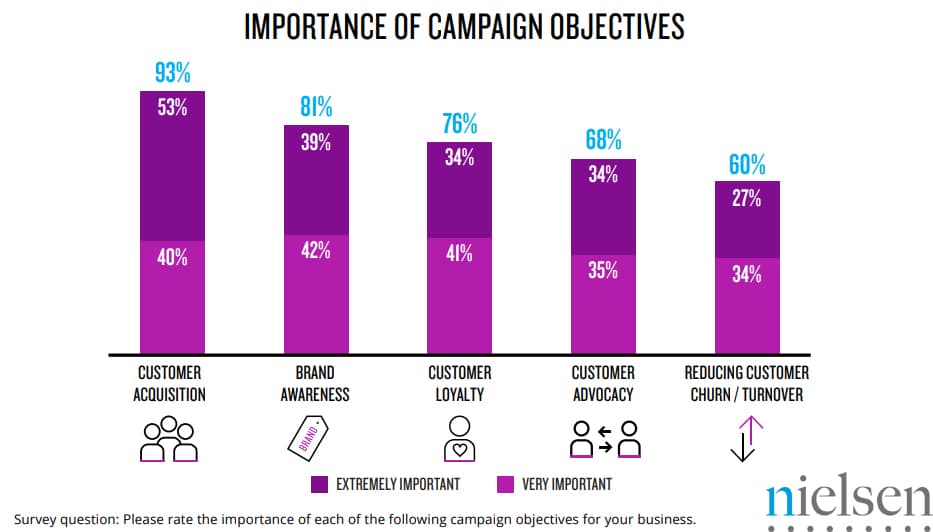
How To Change the CEO-CMO Relationship From Rivals to Teammates
There’s a perpetual game of tug-of-war going on between CEOs and their CMOs.
CEOs want results. CMOs want to deliver results.
So, what’s the issue?
The most critical role of a CMO, according to CEOs, is to grow the business. CMOs want to deliver ROI and show real proof that what they’re doing works.

The problem is when CEOs ask CMOs to work on trivial tasks (like rebranding or a multitude of paid digital ads that won’t work) and then get upset when there’s no business growth.
CEOs won’t accept marketing that doesn’t work. And they shouldn’t have to. The issue is helping CEOs see the difference between what won’t work and what just takes time. This is the CMOs job.
Only 34% of CEOs have confidence in their CMOs. Makes sense when the two suspend their ultimate goal- business growth- tethered on a rope between each other while running in opposite directions.
The relationship between the two tends to be pretty tense. If they could only learn to work together, reaching their (common) goal would be so much easier. So, how can CEOs and CMOs move from being practically rivals to teammates striving for the same goals?
Key Takeaways:
- CMOs have to take responsibility for marketing efforts by pushing back against requests that won’t help them grow the business and deliver ROI.
- CEOs need to give their marketing experts a seat at the table, allowing them to fully utilize their skills to be successful.
- Teamwork really does make the dreamwork, and looking at the future with each other in mind can create more trust between the two executive branches.
First, let’s look at some of the mistakes these executives seem to make.
Common Mistakes CMOs Make
Letting buyers’ needs take a backseat.
Customer focused marketing is everything in the age of the internet. It’s the undeniable truth that people just don’t care about anything that doesn’t apply to them directly. With the millions of options available on the web, this sentiment is just amplified.
Do your customers really care about your latest plan for rebranding? Chances are, they couldn’t care less about your logo changing from cyan to a deep turquoise. That doesn’t affect whether or not your product is worthwhile to them.
Marketers need to focus on the customer’s needs and interests 100% of the time. When CEOs ask for remedial tasks like rebranding and excessive paid social media ads, they stray further and further away from what actually works.
Posting about the latest award you won might build credibility, but it’s not worth spending anymore time or money marketing it. The sheer fact that you won the award doesn’t mean you’ll generate leads by posting about it, especially when you do it in a purely self-serving manner.
Say you decide to mention this award in a thought leadership style article about future trends in your market. Potential customers can read the article for new ideas they can use in their everyday life, and they just happen to learn about your industry credibility too.
In this situation, the CEO gets what they want– to show off accomplishments– and the CMO can use it to help generate leads. A win-win, but not the common reality in these situations.
Leaving sufficient research out of the conversation.
When a CEO asks their CMO to do something in the marketing world, it’s the CMOs job to do the research necessary to make the right decision.
One of the issues between CEO and CMO relationships is the lack of pushback. Rather than blindly do what the CEO wants to make them happy, the CMO needs to find research that either supports the new effort or takes it off the table.
CMO tenure is at the lowest point of the last decade. 80% of CEOs credit this short tenure to CMO failure, when in reality it’s a disconnect between what success really looks like.
CMOs can help themselves by pushing back against requests they know won’t work, with the research to support it.
Let’s look at banner ads for example. If you check the research it’s clear that banner ads simply don’t work. With a click through rate of 0.06% (60% of which is accidental or bots) banner ads are still seeing yearly increases of 7%.
Companies are still wasting time and effort on this marketing campaign that so clearly doesn’t work. This goes for a multitude of different types of digital ads. If the necessary research was conducted, CMOs could take one more failure off the table.
Common Mistakes CEOs Make
Getting distracted by the shiny new strategy.
CEOs that have a hard time sticking to a strategy will also have a hard time delivering or measuring results.
The shiny new social media site or aesthetic trend or whatever it may be, might be enticing, but switching up on what you’ve already researched and put work into isn’t always the best idea.
With a good CEO-CMO relationship, these decisions can be made together in a marketing research based manner.
Trying to find the solution before they understand the problem.
What Hubspot calls ‘tactical tunnel vision,’ this marketing mistake is one CEOs fall into often.
Maybe a few years ago one of their marketing campaigns really took off and gained popularity. Their carousel ad campaign actually reached its target audience and generated a high CTR. That’s great, but there’s no reason to assume that the same strategy will help with a new problem in a new year.
Not all the answers are available at first glance. Marketing is always changing, so a company’s strategy needs to be as well.
What Are Some Tips to Improve The CEO and CMO Relationship?
CMOs aren’t going anywhere, but only 32% of CEOs trust CMOs, so their relationship is one that needs to be nurtured a little extra.
Look at the future as a team.
These executives have the same goals, so why act as opponents in a game of tug-of-war? When the relationship between the two is treated as a long-term one, they can accomplish a lot more.
Developing growth strategies together can illuminate common goals, and the means to reach them. This will end up being a lot more functional than CEOs requesting what they think will work without input from the marketing expert.
Align company goals with marketing goals.
A CEO is in the position to incorporate marketing strategy and goals into every other branch of the company. This can create an environment marketing experts can thrive in.

Image Source: Agile Strategy Manager
When all the company’s organizational branches are working towards a common goal, the pay off is exponential. When the CEO is on board with CMO ideas, these ideas have a fighting chance at paying off.
The relationship between CEOs and CMOs may always have some natural tension. Being on the same page with your executive counterpart is everything when it comes to measuring success. Having the same definition of success and the same idea of how to get there is crucial in creating trust.
So how do CEOs and CMOs stop working against each other?
Coming together as a team, and aligning the company goals with marketing strategy is the key! This makes sure that your marketing has executive support, is driving towards business goals, and hopefully helps make that annual budget conversation a little easier.
Need help with measurable marketing ROI you can show your CEO that you’re aligned to their growth plans? Check out our Content Builder Service and schedule a quick consultation today!




